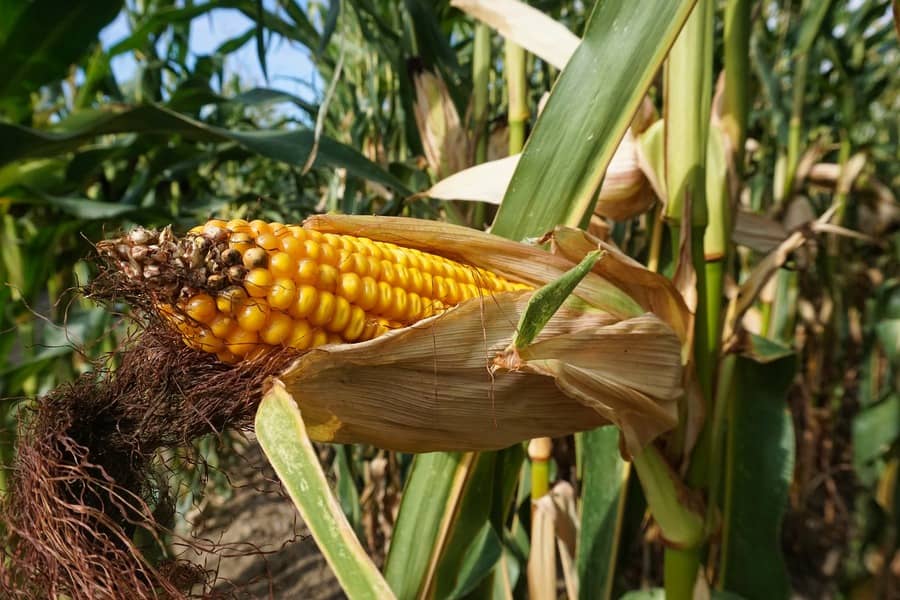Porto Alegre, November 21, 2023 – While the international market is trying to find factors to support prices, the Brazilian crop is having a challenging year due to an anomaly of the El Nino phenomenon. In the South region, excessive rainfall is hampering cropping treatments, and application of urea continues to suggest good yield, although below the growers’ expectations. In the rest of the country, very high temperatures and little rain continue to devastate the soybean crop and hold back the pace of summer corn planting. Meanwhile, the Brazilian Southeast continues with firm prices, trying to find support for highs due to the lack of stocks in the consumer sector. Exports remain at a good pace despite the clear caution of trading companies in the domestic market.
The Brazilian summer crop has been difficult in November. In Rio Grande do Sul and Santa Catarina, low luminosity and constant rain have reduced the plant stand and suggested a higher incidence of pests and development difficulties. The biggest one is the application of urea or the loss of fertilizer due to excess moisture. In Paraná, the situation is not so critical, in the south of the state the situation can be considered similar to that of neighboring states.
In the Southeast, planting has been halted in recent days. The lack of rain and very high temperatures lead growers to stop planting while waiting for better conditions. For the planted crops, there is some stress caused by the heat but without affecting yield potential. If the rains return this week, the good profile for the summer will continue, just with some delay in planting.
In the Midwest, the summer planting is more concentrated in Goiás, in the center-north of the state. This region also suffers from high temperatures and low rainfall. Planting was at a standstill for both corn and soybeans. If there are seeds available, planting or occasional replanting can be carried out until December 15.
The big discussion at the moment is the area of the 2024 corn second crop. The difficulties of this soybean crop from Mato Grosso do Sul to Maranhão are evident. We will not certainly have a full crop or with results close to those seen in 2023. However, the issue of the corn second crop has many variables at the moment that could still affect production in 2024:
– Without a doubt, there may be some reduction in the planted area in Mato Grosso, a region where the planting window closes in February. So, the entire area replanted in November with soybeans will be outside the planting window for the 2024 corn second crop. Any estimate about this volume made at this moment will not be assertive;
– High temperatures are accelerating the soybean cycle, particularly in Mato Grosso. Therefore, areas that would only be reaped in February are being brought forward to January, which could generate an important variable for the decision to plant the 2024 corn second crop. There are 7 mln hectares of corn second crop in Mato Grosso and, certainly, not everyone plants cotton and sesame to replace large volumes of area. Cotton, for example, has more risks, costs, and possibilities of negative margin than corn;
– Goiás and Mato Grosso do Sul still have difficulties in finishing the soybean planting. However, the second-crop corn planting window runs until March. A late crop, indeed, but not lost in advance;
– Paraná, São Paulo, and Minas Gerais still do not have serious problems with the corn second crop. It seems clear that sorghum will become more evident in some locations as an alternative to corn in the late planting window. Likewise, it is a commodity that supplies the largest consumption sector in the country, which is the animal sector;
– Besides the cut in technology, some loss in planted area in Mato Grosso tends to reduce the production potential of the 2024 corn second crop, but we must avoid the exaggerations brought by the Brazilian agricultural media. The situation is difficult, however, planting confirmations will only occur in February, and it is too early to exaggerate the production losses of the 2024 corn second crop.
In this way, the market tries to price the panic of the current climate situation, as usually, placing future prices on B3 well above export parity. September 2024 with levels above BRL 70/bag while the port indicates BRL 62/63 is a difference that is only true in a chaotic crop. However, the difference suggests hedging operations for growers who will plant the corn second crop.
In the physicals, there are different situations. The South of Brazil with firm but stable prices and awaiting the harvest in Rio Grande do Sul in January. In the Southeast, prices accelerated due to good exports from Santos and the lack of strategy in the consumer
sector. As the consumer sector continued to ignore the export pace and maintained only short-term stocks, not taking advantage of low prices at harvest and excess supply, this type of regional price movement took place in São Paulo and Minas Gerais.
In the Midwest, prices have gained momentum in Mato Grosso do Sul and Goiás when compared to the situation in the Southeast. However, nothing has changed in Mato Grosso, be it for physical corn or the 2024 second crop, despite the current crop situation.
Follow the Safras Agency on our website. Also follow us on our Instagram and Twitter and stay on top of the main agribusiness news!
Copyright 2023 – Grupo CMA

